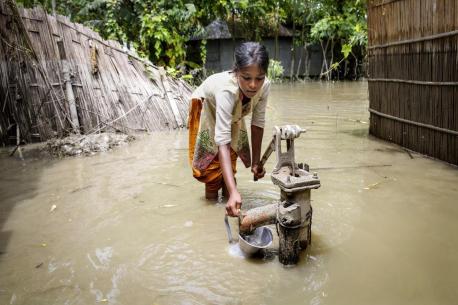
Flood Relief
When severe flooding puts lives at risk, UNICEF is there — delivering immediate relief and then helping communities recover and build back better.
Over 500 million children live in flood zones
Catastrophic flooding from extreme weather poses a very high risk to the world's children, as a result of the growing severity of cyclones, hurricanes, storms and rising sea levels. Flooding can disable sanitation facilities and contaminate water supplies, creating breeding grounds for deadly waterborne diseases. Without adequate supply, sewage systems fail and there is insufficient water for basic hygiene needs. Access to safe water to maintain proper hygiene and sanitation is critical.
When severe flooding puts vulnerable children and families at risk, UNICEF is there
UNICEF's supply operation, which includes the largest humanitarian supply warehouse in the world, enables the delivery of lifesaving supplies to anywhere in the world within 48 to 72 hours.
Working with local partners, UNICEF provides safe drinking water, hygiene and sanitation kits, medicine, nutrition and more. UNICEF also creates Child-Friendly Spaces and temporary classrooms, safe spaces for displaced children to learn and play and receive psychosocial support. UNICEF protection teams work to reunite separated children with family members.
Once the immediate crisis has passed, UNICEF works to prepare communities for the next emergency by assessing risks and helping strengthen health care systems, schools and other community services to become more extreme-weather resilient.
Learn more about how UNICEF works to address climate change and its impact on children.
Help provide immediate and long-term relief to children and communities.

